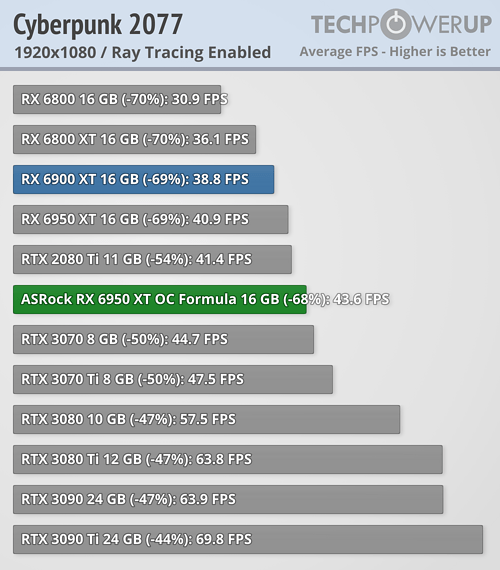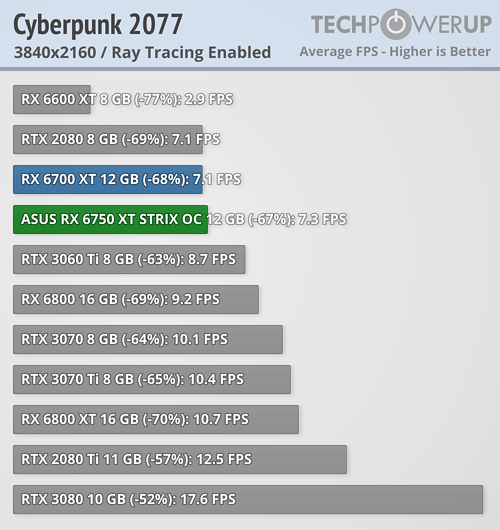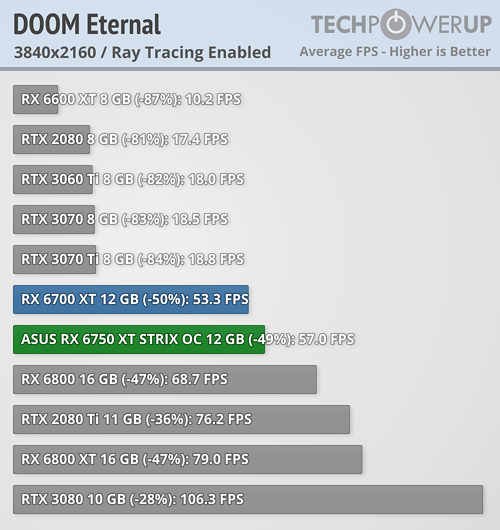They won't at all because 4070/7700XT are 1440p cards and there are already cases where 8GB falls short. With added RT on top 8GB is even less usable at 1440p. Further I don't think there is any expectation that N33 will be faster than the 4070, it should be competing with the 4060.
Do you really think AMD would have set an MSRP of $330 and $380 for the two N23 parts in a non inflated market? Even with such 'bad' MSRPs prices went a lot higher at the time anyway due to the demand.
The only potential gap to fill is below the 7600 and for that you need a cheaper part than N33. The only option would be N23 but with 8GB ram and it being on N7 rather than N6 chances are the actual cost / die is pretty similar. On top of that N33 will have better perf/watt than N23 so cooling and power requirements go down which helps to lower BOM as does using just 6GB of ram (possible with N23 as well).
Bottom line is that N33 cut with 6GB ram and the efficiency improvements of RDNA 3 is probably no worse BOM wise than a 6GB N23 based part and I guarantee it will be cheaper than an N22 based part so from a margin POV why go with the slower N23 config for the 7500XT when you can make it faster and use cut N33 with no real increase in cost to AMD.
Because the other options cost more and / or give you a far worse product.
With just 3 graphics dies AMD can cover the whole non APU stack and for N31 / N32 parts the number of MCDs can vary based to lower BOM slightly in the cut versions making them less painful to manufacture. This is what I think AMD are going to do with the lineup.
| AMD Die | Product | Spec | NV Die | Product |
|---|
| N31 | 7900XT | 384bit - 24GB - 96CU - 192MB IC | AD102 | 4090Ti |
| N31 | 7900 | 384bit - 24GB - 84CU - 192MB IC | AD102 | 4090 |
| N31 | 7850XT | 320bit - 20GB - 80CU - 160MB IC | AD103 | 4080Ti |
| N32 | 7800XT | 256bit - 16GB - 64CU - 128MB IC | AD103 | 4080 |
| N32 | 7800 | 256bit - 16GB - 64CU - 128MB IC | ?? | 4070Ti |
| N32 | 7700XT | 192bit - 12GB - 48CU - 96MB IC | AD104 | 4070 |
| N32 | 7700 | 192bit - 12GB - 42CU - 96MB IC | AD104 | 4060Ti |
| N33 | 7600XT | 128bit - 8GB - 32CU - 64MB IC | AD106 | 4060 |
| N33 | 7600 | 128bit - 8GB - 28CU - 64MB IC | ?? | 4050Ti |
| N33 | 7500XT | 96bit - 6GB - 24CU - 32MB IC | ?? | 4050 |
Not sure on NV specs so excluded them but I think something like this can work for AMD.
My issue is where do AMD put the 5SE 5MCD part? It has a place I am just not sure where so here is the super wishful thinking version AMD could produce (with a more realistic version too). with some price guesses.
| Die | Wishful thinking stack | More likely stack | Spec | Target Res |
|---|
| N31 | 7900XT | Rage Fury MAXXX ($2,000) | 384bit - 24GB - 96CU - 576MB IC (V-cache on the MCDs because why not for $2k?) | 8K / 4K with RT |
| N31 | 7900 | Rage Fury ($1,500) | 384bit - 24GB - 96CU - 192MB IC | 8k / 4k with RT |
| N31 | 7800XT | 7900XT ($1100) | 320bit - 20GB - 80CU - 160MB IC | 4k with RT |
| N31 | 7800 | 7900 | 320bit - 20GB - 70CU - 160MB IC | 4k with RT |
| N32 | 7700XT | 7800XT ($750) | 256bit- 16GB - 64CU - 128MB IC | 4K / 1440p with RT |
| N32 | 7700 | 7800 | 256bit - 16GB - 56CU - 128MB IC | 4K / 1440p with RT |
| N32 | 7600XT | 7700XT ($550) | 192bit - 12GB - 48CU - 96MB IC | 1440p / 1080p with RT |
| N32 | 7600 | 7700 | 192bit - 12GB - 42CU - 96MB IC | 1440p / 1080p with RT |
| N33 | 7500XT | 7600XT ($400) | 128bit - 8GB - 32CU - 64MB IC | 1080p |
| N33 | 7500 | 7600 | 128bit - 8GB - 28CU - 64MB IC | 1080p |
With the more likely product each tier is going to get around a 1.7-2x perf gain with the full fat N31 occupying a brand new tier that AMD don't really compete in. It also means in theory the x900 can stay as a 300W part which might be more palatable for some.
*Edited the amount of IC for the MAXXX because with a cache only die AMD can fit 64MB in 36mm and if the 40mm or so estimate for the MCD is accurate they can just slap it over the top of that and end up with an MCD containing 96MB of IC.






